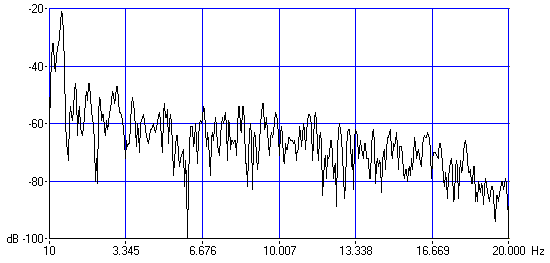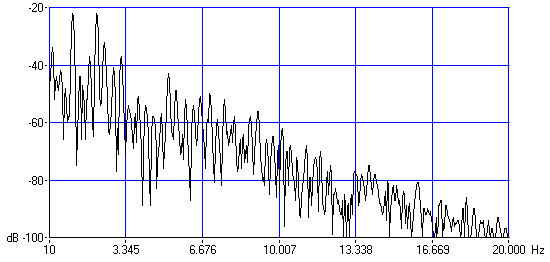Acoustical Society of America
ICA/ASA '98 Lay Language Papers
Eric Dolphy's Playing Style
in the Vienna Art Orchestra's Performance
in the Vienna Art Orchestra's Performance
Alexandra Hettergott - a7321nai@pcserv.univie.ac.at
Koflergasse 19/9
A-1120 Vienna, Austria
Popular version of paper 1pMU4
Presented Monday afternoon, June 22, 1998
ICA/ASA '98, Seattle, WA
[Please note also paper 4pMU3
Thursday Afternoon, June 25, 1998]
Aiming on the very musical expression intended, "tone colorist" Eric Dolphy in his developed avantgarde-jazz playing style on alto sax and bass clarinet as well as on flute made use of several "unorthodox" playing techniques. In musically portraying him, the musicians of the Vienna Art Orchestra (henceforth VAO) render Dolphy's compositions in their own performance style, adopting and adorning his melodies typically performed in a highly expressive, noise-inducing way with their instruments' rich means of expressions.
Founded in 1977 by Swiss composer Mathias Regg and although not even really "Viennese" in its composition, the VAO yet also very much provides Viennese sense of humor and Austrian musical elements, as waltz or laendler. And it is thanks to Regg's wealth of ideas that the orchestra became quite famous in the last twenty years with the ingenious combination of composition and improvisation in mostly long suites giving rise for a postmodern mixture of different Jazz styles, in which it on a high level explores musical sources from Mozart to Mingus. In its "Nine Immortal Evergreens for Eric Dolphy" recorded in 1995, the VAO featured the famous and early exited woodwind virtuoso. Although this implies a more brassy "big band"-like sound, as "orchestra" indicates and compared to the original vibes, bass, and drums accompaniment, the VAO's thematic treatment of several pieces selected from late Dolphy's performances tries to stay close to the originals, not yielding mere adaptations but arrangements rather up to free association.
However consequently it is one single person who expressed himself, and however consequently he was looking for new, extraordinary, and often noise-inducing techniques in the need for more expression and an adapting to speech-like sounds, Eric Dolphy's performance so rich in emotions also sensibly met each of his instrument's typical features: While giving the flute more clearer, at times almost through-looking bird-like lightness, he favored a lively breakneck expression bursting with energy on the versatile alto sax, whereas the improvisations on the bass clarinet, even in his highly developed playing style, kept the darker, more ponderous and pain-laden part.
Though individually, meeting their own instruments' typicality applies also to the VAO's soloists:
Chosen for comparison as well as contrast, in the three pieces focused on it is also the french horn's straight, sonorous, velvety sound ("Gazzelloni"), the more flexible trumpet's brilliance as well as mellowness ("Straight Up and Down"), and the trombone's great range in sound production from blaring to stuttering ("Head and Beard") that become manifest, including playing techniques typical of Jazz, like muted "wah-wah" or growling sounds.
While crossover tendencies and a postmodern, all-including mixture of styles are a sign of our time, in this context it is important to see also Eric Dolphy's fields of musical interests: His liking for Schoenberg's free tonality, his being intrigued by Indian ragas and the singing of the Pygmies, his being inspired by bird songs (as a point of interest not focused on, the last two influences on his flute performance can be observed, for instance, in his "You don't know what love is" of his Last Date of 1964).
His apparent genuine inclination for multiphonic, even dissonant sounds led him to his mature playing techniques, polished and perfected in order to sound out the possibilities of sound production on the respective instrument up to its outermost boundaries--to increase expression, to adapt to speech or to sounds of nature. That the presence of noisy components does increase a sound's expressivity, however, can frequently be observed in Jazz, not only in the often smoky or creaky singing voices, but also in an instrument's adaptation to speech in sound and playing style (the more if it's blown), which does not consist of pure, steady melody, but of intermediate tones and inflected syllables as well as--to a great amount--of noises.
The paper compares several excerpts of Dolphy's playing technique in his original late recordings (1964) with the recent performances by the Vienna Art Orchestra (1995), focusing on the wind instruments' sounds as part of the personal aesthetics of expression in both model Dolphy and his interpreters. For this purpose, following pieces of music were chosen:
"Head and Beard", originally played by Dolphy on the bass clarinet versus the trombone's, "Gazzelloni", originally flute, versus the french horn's, and "Straight Up and Down", alto sax, versus the trumpet's rendering. They show contrasting and common features in particular instrument sound as well as individual playing style: Where Dolphy did choose his favorite woodwind instruments to express his very personal style and intention, the soloists of the VAO use the particular sound color and characteristics of their instruments to individually feature him. Even if, quite naturally, the VAO's rendering changes late Dolphy's original free tonal and frictional aesthetics of expression, his compositions are provided with an interesting new facet in that the soloists allow of a sound expression corresponding to their own instruments' peculiarities. In solo interludes typical of Jazz, consequently, it is not attempted to adapt the trombone's, the french horn's, or the trumpet's brassy characters to either the bass clarinet's dark and hollow, the alto sax's flexible velvety, or the flute's bright silvery sound, but to bring in an additional aesthetic value, a more individual touch: It's Jazz, after all.
So, in looking for individual expression and increased expressivity quite unusual and often noise-inducing playing techniques are applied, including mutes or preparations as well as certain (unorthodox) fingerings or/and embouchure adjustments, resulting in (intentionally) rough, noisy, screeching--multiphonic--, or muted, muffled, breathy sounds.
As analysis does show, this is due to heterodyne or noisy components in a distorted or deadened spectrum, dependent on the respective distribution. As an instance, the (though accompanied) flute's spectrum (Figure 1), here characterized by a breathy whistling sound falling in pitch (about one octave and a fifth), shows a mainly disfigured spectral structure except to one prominent component, that is, the fundamental (plus some muffled partials). And while the alto sax's noisy screeching sound with the harmonic clearly provides an additional heterodyne pattern (Figure 2), the slanting mute-induced "wah-wah" sound of the trumpet's solo in the piece's corresponding realization except to one clear peak (here the 3rd partial) yields hardly a harmonic, but the more covered and distorted upper spectrum (Figure 3).

Figure 1. "Gazzelloni": Eric Dolphy, flute. The 1024 FFT spectrum, taken from the 2nd part of the sample (cf. sound example, with accompaniment) here shows one prominent component at 560 Hz (=C#5, while the pitch in all is more to a D5).
Sound Example: Wave Audio 44.1kHz/16bit (mono) (0.5s, 44 KB)

Figure 2. "Straight Up and Down": Eric Dolphy, alto sax. The FFT spectrum, gotten again from the 2nd part of the sample (cf. sound example, with accompaniment) with the harmonic (f0=1035 Hz/C6) here shows an additional heterodyne pattern (Df=+/-320 Hz).
Sound Example: Wave Audio 44.1kHz/16bit (mono) (0.5s, 44 KB)

Figure 3. "Straight Up and Down": Bumi Fian, trumpet. The FFT, selected from the middle of the sample (cf. sound example) here shows a spectrum covered and distorted almost except to the peak at 949 Hz, the 3rd partial of weak f0=314 Hz (which is, in effect, an Eb4, while the pitch is more to an E4).
Sound Example: Wave Audio 44.1kHz/16bit (mono) (0.5s, 44 KB)
--Contrasting features, yet common in their looking for a deepening in emotion and expression due to several unorthodox and noise-inducing playing techniques.
|
Used sound carriers: - Eric Dolphy, Out to Lunch (p1964) [Blue Note 0777 7 465242 1]; and his Last Date (p1964) [EmArCy 510 124-2] - Vienna Art Orchestra, Nine immortal non-evergreens for Eric Dolphy (p1995) [Amadeo 537 096-2] |